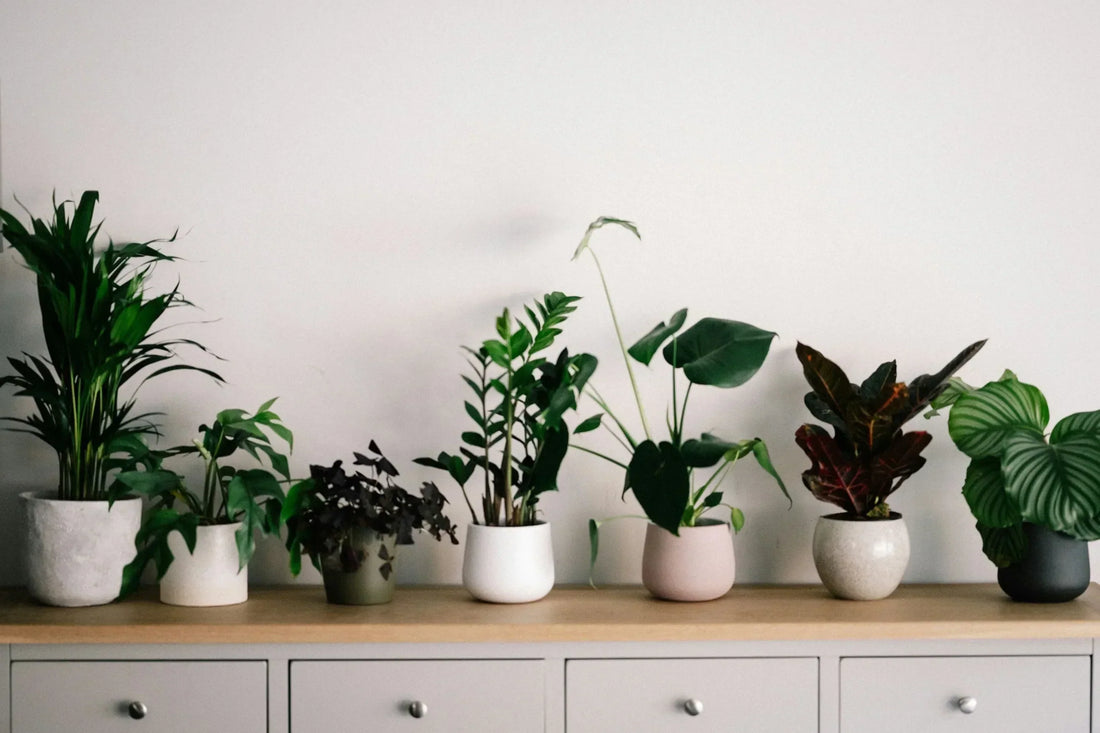
The Ultimate Guide to Choosing Plastic Plant Pots for Your Home and Garden
Looking to give your plants a cozy new home? Choosing the right plant pot can make all the difference. Whether you’re decorating your living room or setting up a lush garden, plastic plant pots are one of the easiest and most affordable ways to grow healthy plants.
In this guide, we’ll explore the different types of plastic pots, when to use them, and how to pick the right size and style for your space. We’ll also explain the benefits of large plastic plant pots, small plastic pots, and everything in between.
Let’s dig in!
Why Choose Plastic Plant Pots?
Plastic pots are a popular choice for indoor and outdoor gardeners, and for good reason. They’re lightweight, cost-effective, and come in tons of sizes, colors, and shapes. But that’s not all:
Affordable and Easy to Find
From local nurseries to online stores, plastic pots for plants are everywhere. They’re a budget-friendly option for beginners and pros alike.
Lightweight and Portable
Unlike ceramic or clay pots, plastic is super light. This makes big plastic plant pots much easier to move around, especially if you're rearranging your garden.
Durable and Weather-Resistant
Many black plastic plant pots and outdoor options are designed to handle rain, sun, and even frost. That means they won’t crack or fade easily.
Good for Root Health
With proper drainage holes and the right plastic planter liners, plastic pots can keep roots healthy by preventing overwatering.

Types of Plastic Plant Pots (And When to Use Them)
Here’s a quick breakdown of the most common types of plastic pots and how to use them:
1. Small Plastic Plant Pots
Perfect for seedlings, herbs, or succulents. These are ideal for windowsills, small shelves, or balcony gardens.
Best for: Indoor décor, plant propagation, gifts
Pro Tip: Use plastic planter liners to protect decorative pots and make repotting easy.
2. Large Plastic Planting Pots
Need to plant a small tree or a big fern? Go with large plastic planting pots. These give roots more room to grow and support bigger plants.
Best for: Trees, tall plants, vegetable gardens
Pro Tip: Add pebbles or perlite at the bottom for better drainage.
3. Black Plastic Plant Pots
You’ll often find these at nurseries. They absorb heat well and help encourage faster growth in cooler climates.
Best for: Outdoor use, propagation, commercial planting
Pro Tip: Use them as starter pots before transferring to more decorative planters.
4. Decorative Plastic Pots
Want your pots to match your home’s aesthetic? Choose from colorful or patterned options for a modern, boho, or minimalist look.
Best for: Interior styling, patios, balconies
Pro Tip: Make sure your pot still has drainage holes or use a liner.

Choosing the Right Size: Small vs. Large Plastic Plant Pots
It’s not just about looks, the size of your pot plays a big role in your plant’s health.
Small Pots
Great for tiny spaces and slow-growing plants. However, they dry out faster and may need more watering.
Big Plastic Plant Pots
These are perfect for plants that love space, like fiddle leaf figs, palms, or tomatoes. Larger pots hold more soil, which keeps roots moist longer.
Large Plastic Planters for Outdoor Use
When landscaping or setting up a patio garden, large plastic planters are your best bet. They’re tough, hold up well outdoors, and often come with UV protection.
The Role of Plastic Planter Liners
Plastic planter liners are inserts that go inside your decorative pots. They make watering easier and prevent water damage to furniture or floors.
Benefits of Using Liners:
- Prevent root rot by improving drainage
- Make potting and repotting simple
- Keep decorative pots clean and dry
- Extend the life of non-waterproof containers
If you're reusing older pots or containers without holes, liners can be a game-changer.

Best Places to Use Plastic Pots for Plants
Here are some great ways to use plastic plant pots around your home and garden:
Balcony Garden
Use small plastic pots for herbs and medium plastic pots for flowers like petunias or marigolds.
Indoor Corners
Brighten up corners with large plastic plant pots holding statement plants like snake plants or monsteras.
Patio Planters
Choose large plastic planters for lemon trees or large ferns. Add wheels underneath to make them easy to move.
Vertical Gardens
Lightweight plastic pots for plants are perfect for wall-mounted plant holders and hanging planters.
How to Style Your Plastic Pots
Plastic doesn’t mean boring! Here are some styling tips to make your space look chic:
- Spray-paint black plastic pots in gold, white, or pastel tones.
- Wrap jute rope or macrame around pots for a boho look.
- Use baskets as decorative holders for plastic planter liners.
- Mix different pot sizes for a layered, natural feel.
Want to change the look with the seasons? Just switch the liners or outer baskets for an instant refresh.

Eco-Friendly Tips for Plastic Pots
Worried about plastic waste? You can still be plant-smart and earth-friendly.
- Reuse and repurpose your old plastic pots.
- Look for recycled plastic pots made from eco-safe materials.
- Donate unused black plastic plant pots to schools or gardening clubs.
- Choose pots labeled BPA-free for edible plants like herbs or lettuce.
Many brands now offer biodegradable or recycled plastic options that are both stylish and sustainable.
Final Thoughts: Why Plastic Pots Are a Smart Choice
From their light weight and low price to their wide range of sizes and colors, plastic plant pots are a smart choice for any gardener. Whether you’re planting succulents in small plastic pots or growing tomatoes in large plastic planting pots, there’s a plastic pot for every need.
With so many choices, from big plastic plant pots for trees to plastic planter liners for stylish setups, the options are endless. Just remember to choose the right size, add drainage, and keep your plants’ needs in mind.
Happy planting!
Frequently Asked Questions (FAQs)
1. Are plastic plant pots safe for plants?
Yes! Most plastic pots are safe, especially if they are BPA-free and used correctly with drainage holes.
2. Can I use black plastic plant pots for indoor plants?
You can, but they absorb more heat. For indoors, use them inside a decorative cover pot or basket.
3. What’s the best pot size for indoor plants?
It depends on the plant. Small pots (4–6 inches) are great for herbs and succulents, while large plastic pots (10–14 inches) suit bigger houseplants.
4. Do I need a liner for plastic pots?
Not always, but plastic planter liners can help with drainage and make repotting easier, especially for decorative pots.
